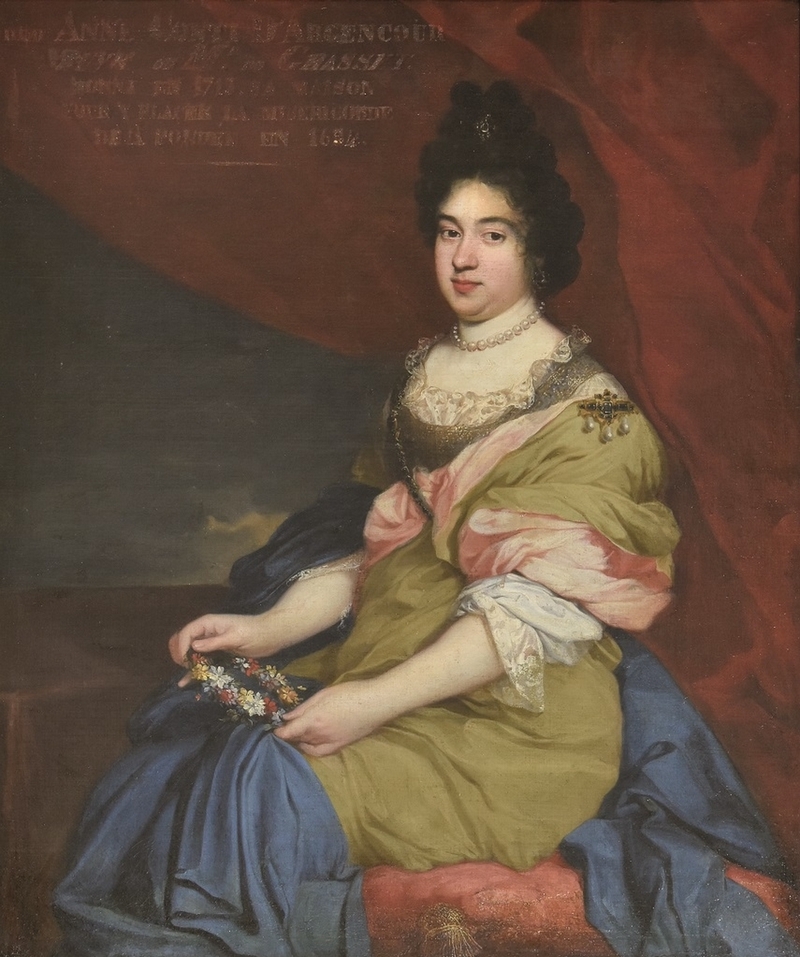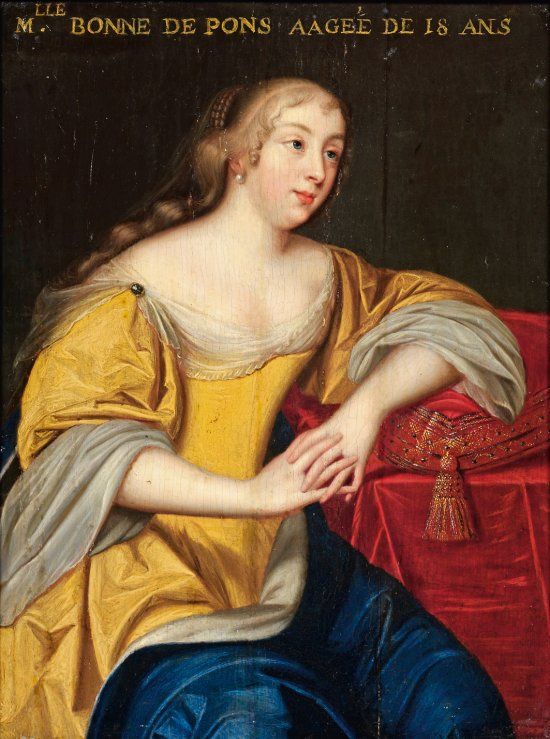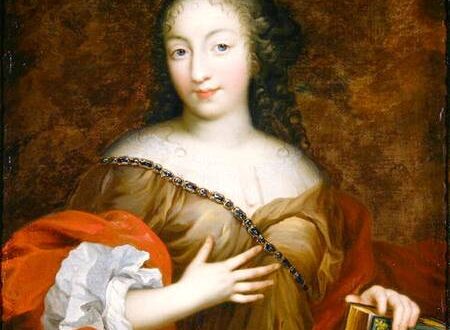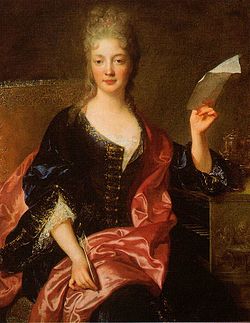Anne-Madeleine de Conty d’Argencourt
Before Marie Mancini and Louise de La Vallière, Louis XIV, aged tender sixteen, had a fling for a certain Mademoiselle de la Motte-Argencourt.
Born in 1637 or 1638 to Pierre de Conty d’Argencourt and Madeleine de Chaumont de Bertichères, Anne-Madeleine de Conty d’Argencourt was around the same age as Louis XIV. She was baptised on September 20 in 1641 and entered the household of Anne d’Autriche later on as fille d’honneur and replacement for Mademoiselle de la Porte. Bussy Rabutin notes in his “Histoire amoureuse des Gaulles” that Mademoiselle de la Motte-Argencourt managed to wake the young King’s interest, Mademoiselle notes the same in her memoirs saying that Louis XIV’s passion for Anne-Madeleine goes back to the year 1658, as she and her mother visited the court at Montpellier. One year after Olympe Mancini, who Anne-Madeleine was good friends with, married and became less tempting to Louis XIV.

Madame de Motteville writes the following: “She had neither a brilliant beauty nor a very extraordinary mind, but her whole person was very amiable. Her skin was neither very delicate nor very white, but her blue eyes and blond hair, with the darkness of her eyebrows and the brown of their complexion, made a mixture of sweetness and vivacity so pleasant that it was difficult to defend oneself from her charms. The features of her face were perfect, she had a very good air and a very nice size. She had a pleasing manner of speech, and she danced admirably well. As soon as she was admitted to a little game, in which the king sometimes entertained himself in the evening, he felt so violent a passion for her that Cardinal Mazarin was uneasy.” The Marquis de La Fare was of the opinion that she is “most amiable and danced better than any one at court.”
Monsieur de Saint-Evremond relates: “Blonde with blue eyes, black eyebrows, and splendidly built, Mademoiselle de La Motte-Argencourt had the audacity, one evening at the ball, to invite the King to dancing, and it had not been without noticing that “His Majesty had become pale and then very red” and that “the hand had trembled.”
Anne-Madeleine managed to capture the heart of the young Louis XIV, who spoke of her as a man in love, but he had a rival. Mademoiselle de la Motte-Argencourt was very friendly with Jean-Baptiste Amador de Vignerot du Plessis, Marquis de Richelieu, who was married to Jeanne Baptiste de Beauvais, a daughter of Catherine Bellier, the woman who introduced Louis XIV into the art of love-making. Louis Henri de Lomenie, Comte de Brienne, even caught them in the act once: “At the same time, at the same place, at Fontainebleau, a very pleasant adventure occurred to me. The Marquis de Richelieu, the most impudent of men, and the most impetuous in his gallantries, was mad about Mademoiselle de Lamothe, the Queen-mother’s maid of honor, very pretty, but less beautiful than Meneville. He was in a very natural position with her, at the very door of the young Queen’s room, seated on a stool outside, in the Guards room, where there was then but a very feeble light. His nymph was on her knees. I will say no more. It is enough that I caught them in the act… He got angry and I thought he was going to beat me, but he stopped, and I began to laugh at his anger. “Go,” said I to him, “my poor friend, the gift that Juno gave to the son of Venus outweighed that of your mother.” This made him laugh in turn … The next day, as I rose, he came to me and I swore to him to keep the secret and having reassured him, we continued to be good friends as if nothing had happened. Whenever I met Mademoiselle Lamothe, she could not help laughing at the adventure of the stool, nor could I.”
Louis XIV had no idea about Anne-Madeleine’s other love interest and kept on to ogle her, much to the displeasure of Anne d’Autriche and Mazarin. He was reprimanded by his mother and, seeing that he left the path of innocence, swore not to ogle her any longer. Not for long, shortly after he could not keep his eyes off her again and apparently even told that if she would love him as much as he did her, he would defy his mother and the Cardinal. A few years later, he said something quite similar to Marie Mancini. Anne-Madeleine apparently declined his advances and Louis was reprimanded by his mother again, this time it showed more effect and he left for Vincennes for some days. Upon returning, he nearly fell for her again.
According to one version of the story, Mazarin and Anne d’Autriche then told Louis about the Marquis de Richelieu and Louis felt so betrayed that he ended his ogling at once. Anne-Madeleine was then sent to a convent by her mother. A other version tells that Anne d’Autriche and Mazarin sent the girl into a convent. A third that she went there herself as the Marquis de Richelieu died in 1662. Fact is, Anne-Madeleine entered the convent of Chaillot around this time, but did not take her vows as nun. Since she had not taken those, Mademoiselle de la Motte-Argencourt had the freedom to leave the convent whenever she pleased and entertain her friends at her house in the rue de la Sourdière. On September 6 in 1715, five days after the death of Louis XIV, she gave her possessions into the hands of the Dames de la Miséricorde and died in 1718 on January 9.




